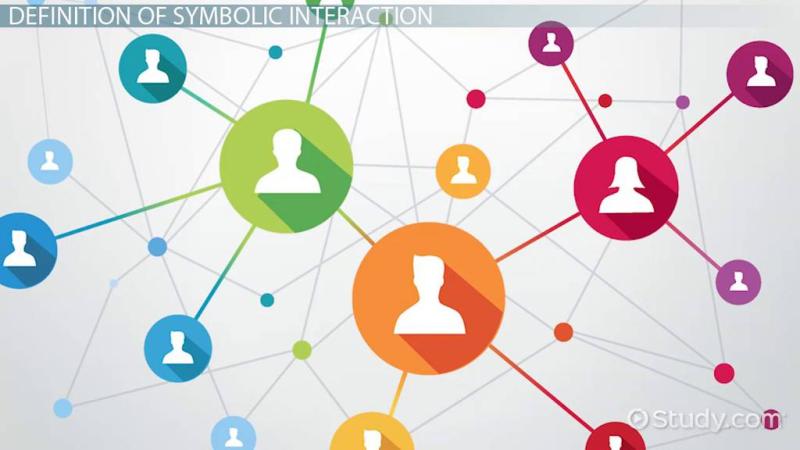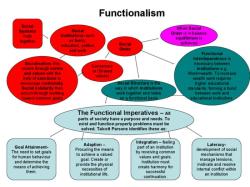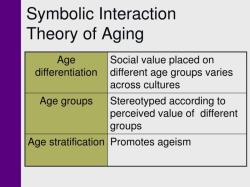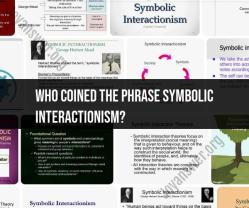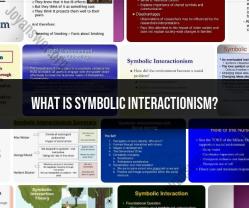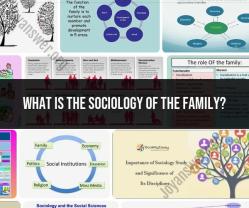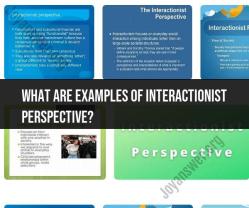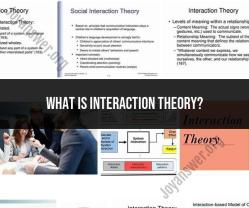How can symbolic interactionists contribute to the study of public space?
Symbolic Interactionism is a sociological perspective that focuses on the micro-level interactions and symbols in everyday life. When applied to the study of public space, symbolic interactionists can contribute valuable insights into the ways individuals interpret, negotiate, and create meaning in their interactions within these spaces. Here are some ways symbolic interactionists can make contributions to the study of public space:
Meaning-Making in Public Spaces:
- Focus on Symbols and Signs: Symbolic interactionists emphasize the importance of symbols in communication. Researchers can explore how symbols, signs, and gestures contribute to the creation of meaning in public spaces.
Role of Language and Communication:
- Language as a Tool for Interaction: Symbolic interactionists highlight the role of language in shaping social interactions. Studying public spaces from this perspective involves analyzing how verbal and non-verbal communication contributes to the construction of social reality within those spaces.
Identity and Self-Presentation:
- Self in Public Spaces: Symbolic interactionism places a strong emphasis on the self and identity. Researchers can explore how individuals present and negotiate their identities in public spaces, considering factors such as clothing, body language, and other symbolic elements.
Social Interaction and Behavior:
- Micro-Level Analysis: Symbolic interactionists conduct micro-level analyses of social interactions. Studying public spaces involves examining face-to-face interactions, the negotiation of social norms, and the development of shared meanings among individuals in these spaces.
Goffman's Dramaturgical Model:
- Dramaturgy in Public Spaces: Erving Goffman's dramaturgical model, a key component of symbolic interactionism, views social life as a theatrical performance. Researchers can apply this model to analyze how people "perform" in public spaces, managing impressions and adhering to societal norms.
Place Attachment and Experience:
- Subjective Experience of Space: Symbolic interactionists can explore the subjective experiences individuals have in different public spaces. This includes studying place attachment, the emotional significance of spaces, and how individuals interpret and experience the built environment.
Social Construction of Reality:
- Reality as a Social Construct: Symbolic interactionists argue that reality is socially constructed through human interaction. Researchers can investigate how the social construction of reality occurs in public spaces and how individuals collectively define the nature of their surroundings.
Study of Social Roles:
- Roles and Expectations: Symbolic interactionists examine the roles people play in society. Research in public spaces can explore how individuals take on and perform various roles, adhering to or challenging societal expectations in those settings.
Micro-Social Dynamics:
- Small-Scale Social Dynamics: The focus on micro-level interactions allows symbolic interactionists to examine the small-scale social dynamics occurring in public spaces, such as fleeting encounters, non-verbal cues, and momentary exchanges.
Technology and Mediated Interaction:
- Impact of Technology: With the rise of technology, symbolic interactionists can investigate how digital and mediated interactions shape social behavior in public spaces, influencing communication patterns and the creation of meaning.
By applying symbolic interactionist perspectives to the study of public space, researchers can gain a nuanced understanding of the intricate ways individuals engage with and contribute to the social fabric of shared environments. This approach complements macro-level analyses and provides valuable insights into the lived experiences of individuals in their everyday surroundings.
In what ways do symbolic interactionists contribute to analyzing public spaces?
Symbolic interactionism offers a valuable framework for analyzing public spaces by focusing on the meaning that people create and negotiate within them. Here are some key ways symbolic interactionists contribute to this analysis:
1. Understanding the Social Construction of Space:
- Symbolic interactionists emphasize that space is not inherently meaningful but rather acquires meaning through the interactions and interpretations of individuals within that space.
- They examine how social groups and individuals use and interpret public spaces, creating shared meanings and norms through their interactions and activities.
- This helps us understand how public spaces can be contested and redefined based on various social factors and power dynamics.
2. Analyzing the Performance of Identity:
- Public spaces serve as stages for individuals to perform and negotiate their identities.
- Symbolic interactionists explore how individuals use clothing, body language, and behavior to present themselves and manage their self-image within different public settings.
- This analysis reveals how public spaces can reinforce or challenge existing social hierarchies and identities.
3. Identifying Micro-Interactional Processes:
- Symbolic interactionism emphasizes the significance of everyday interactions and micro-level processes in shaping the meaning of public spaces.
- By observing and analyzing these micro-interactions, researchers can understand how individuals navigate social norms, negotiate boundaries, and maintain social order within public spaces.
- This detailed analysis reveals the subtle yet powerful dynamics that shape our experiences in public spaces.
4. Examining the Role of Symbols and Signs:
- Symbolic interactionists pay close attention to the symbols and signs present in public spaces, including architecture, signage, art installations, and even clothing choices.
- They analyze how these symbols communicate meaning, influence behavior, and shape individuals' perceptions of the space.
- This helps us understand how public spaces can be designed and used to communicate specific messages and promote specific values or social norms.
5. Examining the Impact of Power and Inequality:
- Symbolic interactionists recognize that power dynamics and social inequalities play a significant role in shaping the meaning and use of public spaces.
- They explore how various groups may have differential access to and control over public spaces, leading to experiences of exclusion, discrimination, and marginalization.
- This analysis highlights the need to design and manage public spaces inclusively and address issues of power and inequality.
Overall, symbolic interactionism provides a rich and insightful lens for analyzing public spaces by focusing on the dynamic interplay of meaning, social interaction, and power dynamics. Its insights can help us create public spaces that are inclusive, meaningful, and contribute to a more just and equitable society.
